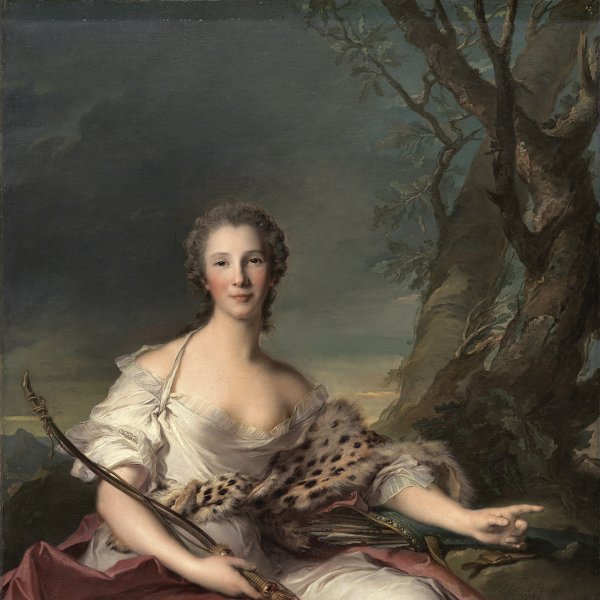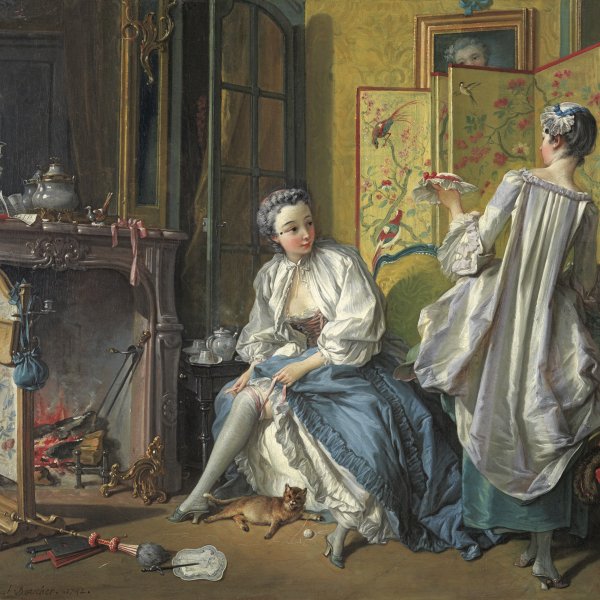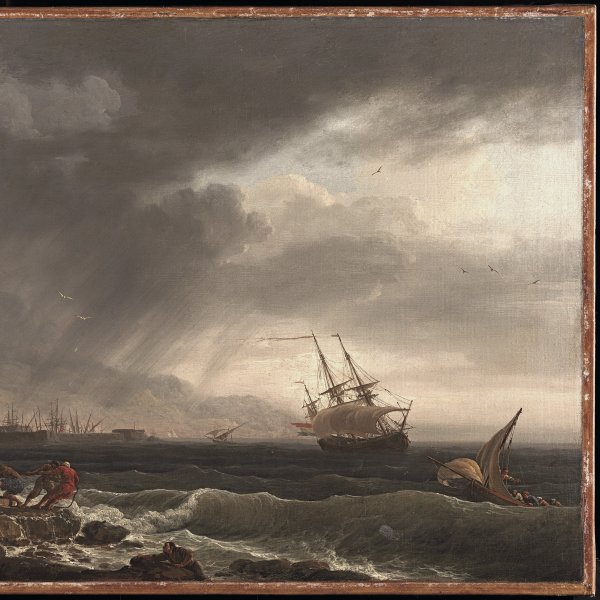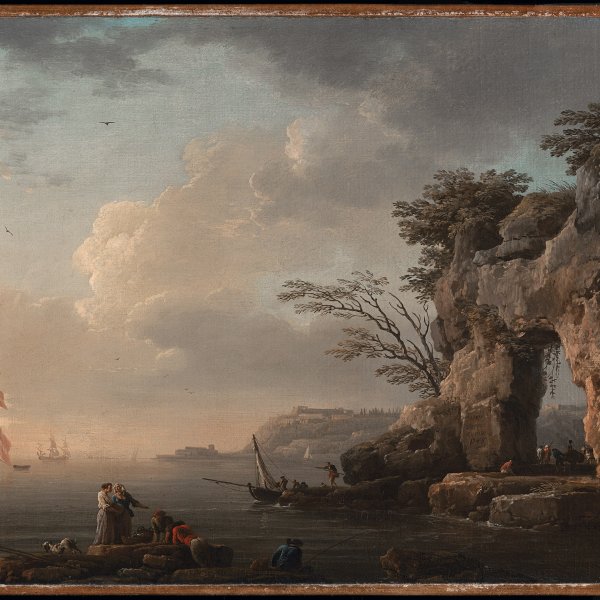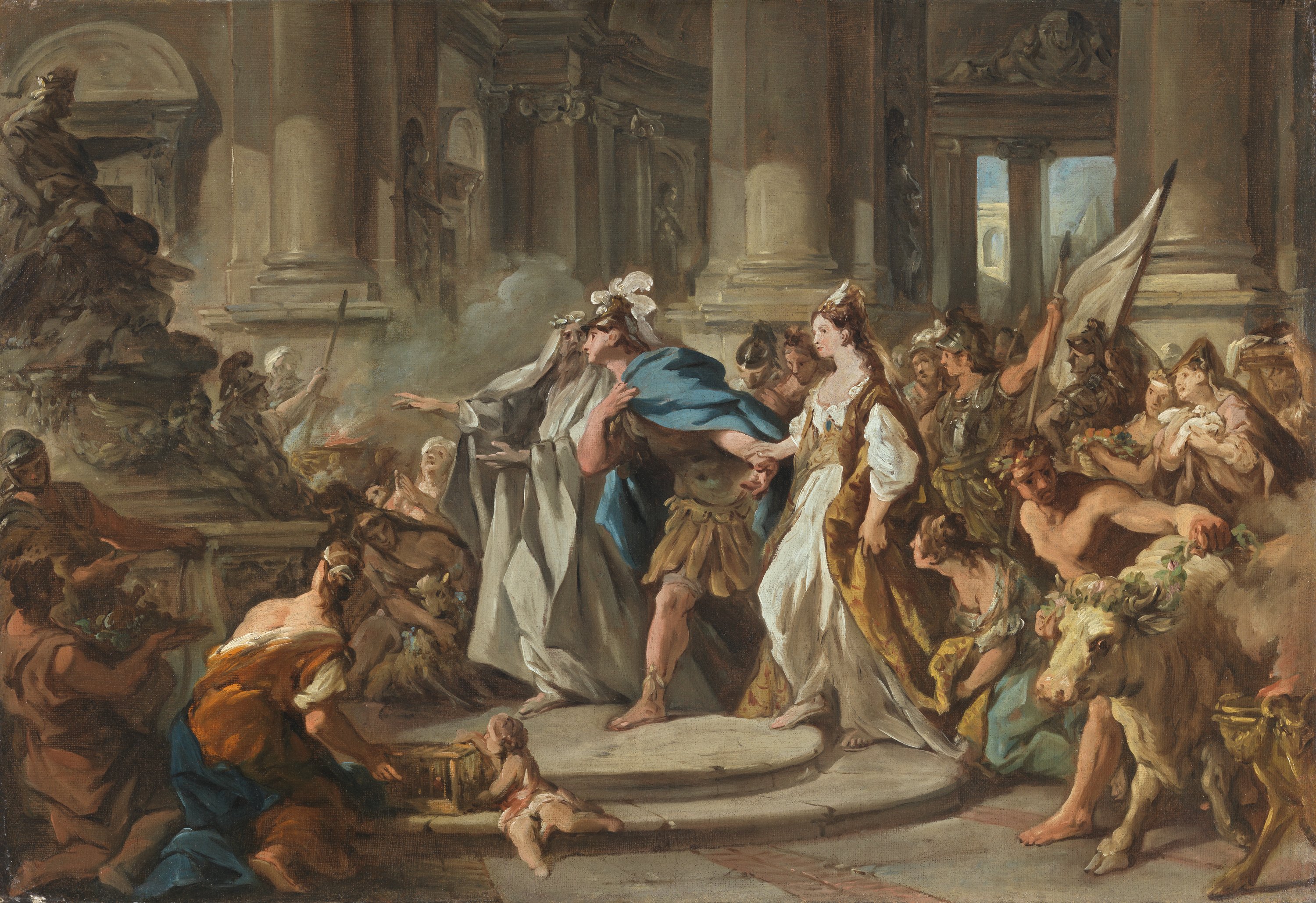Jason and Medeain the temple of Jupiter
ca. 1745
Oil on canvas.
82 x 56 cm
Museo Nacional Thyssen-Bornemisza, Madrid
Inv. no.
409
(1982.12
)
Not exhibited
Level 2
Permanent Collection
Level 1
Permanent Collection
Level 0
Carmen Thyssen Collection and Temporary exhibition rooms
Level -1
Temporary exhibition rooms, Conference room and EducaThyssen workshop
The present canvas of Jason and Medea in the Temple of Jupiter is part of a series commissioned from the artist by the Bâtiments du Roi for the Gobelins tapestry manufactory. De Troy was commissioned to produce a series of cartoons for seven tapestries illustrating episodes from the story of Jason. The artist had already collaborated with the Gobelins manufactory in 1736 when he produced another series on Esther, which was well received. The sketches for the Jason series were painted between 1742 and 1743 and the definitive cartoons were displayed in 1748 in the Salon. The episodes selected by the artist were: Jason receives the magic Herbs from Medea ; Jason subjugating the Bulls; The Combat of the Soldiers born from the Serpent’s Teeth; Jason and Medea leaving Colchis; Aeson regains his youth; Creusa consumed by the poisoned Robe; and Medea raised up in her Chariot. The canvas depicting Jason’s father Aeson regaining his youth was ultimately replaced by Jason and Medea in the Temple of Jupiter as the earlier composition was considered inappropriate with regard to its subject matter.
The subject of the present canvas was described by De Troy in a letter of 1745 to Orry, director of the Bâtiments, in which he informed him of the change in the theme (mentioned above), noting that the sketch depicts the arrival of Jason and Medea at Iolcos when the couple went to give thanks to the gods for their happy return, surrounded by a crowd. De Troy refers to Ovid’s Metamorphoses as his source of inspiration. The cartoon for the tapestry is now in the Musée d’Art Roger Quilliot in Clermont-Ferrand. It is dated to 1745 and was presented at the Salon of 1748 with the rest of the series. There are some differences between the final cartoon and the present canvas, such as the position of the arms of the statue of Jupiter, and the inclusion in the cartoon of an additional figure leading the sacrificial bull that replaces the brazier in the present canvas. There are also slight differences in the poses of some of the figures such as the infant on the ground holding the birdcage in the foreground or the woman with the lamb in the middle-ground between the priest and the sculpture. The present canvas was identified and published in the past as “The Wedding of Jason and Creusa” due to the setting and to the chance similarity between the figures of Medea and Creusa in this series. There is a preparatory drawing for the composition in the Ashmolean Museum, Oxford, which is a study of Medea and the servant who holds up her train on the right.
The canvas was previously on the US art market and entered the Thyssen-Bornemisza collection in 1982. The first reference to the canvas dates from 1764 to an auction held in Paris on 9 April. It was auctioned on two more occasions in 1765 then entered a private collection in Paris, disappearing until 1981 when it reappeared on the art market in Auxerre.
Mar Borobia
The subject of the present canvas was described by De Troy in a letter of 1745 to Orry, director of the Bâtiments, in which he informed him of the change in the theme (mentioned above), noting that the sketch depicts the arrival of Jason and Medea at Iolcos when the couple went to give thanks to the gods for their happy return, surrounded by a crowd. De Troy refers to Ovid’s Metamorphoses as his source of inspiration. The cartoon for the tapestry is now in the Musée d’Art Roger Quilliot in Clermont-Ferrand. It is dated to 1745 and was presented at the Salon of 1748 with the rest of the series. There are some differences between the final cartoon and the present canvas, such as the position of the arms of the statue of Jupiter, and the inclusion in the cartoon of an additional figure leading the sacrificial bull that replaces the brazier in the present canvas. There are also slight differences in the poses of some of the figures such as the infant on the ground holding the birdcage in the foreground or the woman with the lamb in the middle-ground between the priest and the sculpture. The present canvas was identified and published in the past as “The Wedding of Jason and Creusa” due to the setting and to the chance similarity between the figures of Medea and Creusa in this series. There is a preparatory drawing for the composition in the Ashmolean Museum, Oxford, which is a study of Medea and the servant who holds up her train on the right.
The canvas was previously on the US art market and entered the Thyssen-Bornemisza collection in 1982. The first reference to the canvas dates from 1764 to an auction held in Paris on 9 April. It was auctioned on two more occasions in 1765 then entered a private collection in Paris, disappearing until 1981 when it reappeared on the art market in Auxerre.
Mar Borobia





